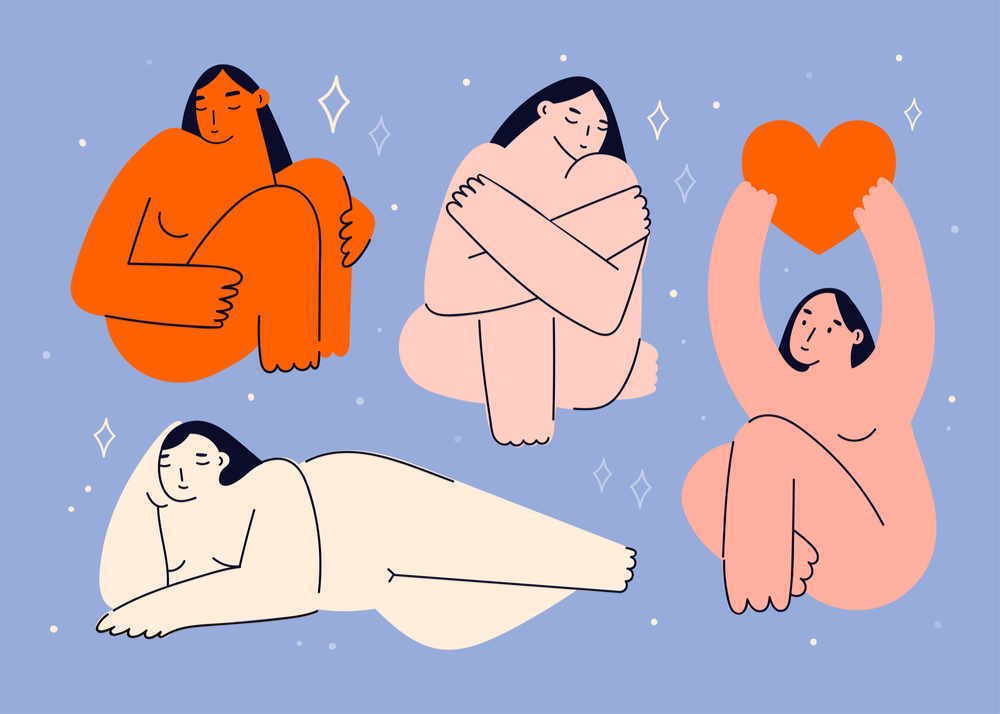We’ve previously touched on Diversity & Inclusion in marketing, yet one topic that’s often overlooked is size diversity. Instead of body positivity, companies should be focusing on its roots in the Fat Acceptance Movement. Body Positivity started as a way to advocate for the most marginalized; fat, trans, and disabled bodies ostracized by society. It’s been so diluted into marketing jargon, that it’s now a wellness buzzword for the diet industry. In this piece, we will unpack the origins of body positivity- fat liberation. Along with exposing some of the pitfalls that jumping on this as a trend can bring.
More than 4 million people, brands, and businesses have used the #bodypositive hashtag on Instagram. The latest version of body positivity is a cure-all and for all bodies. When catchphrases like, “All bodies are good bodies”, “There’s no wrong way to have a body”, and “All bodies are beautiful” became popular hashtags the people using them began to look less like those the movement was created to uplift. Societies newest edition of body positivity has unknowingly become fat liberations version of “All Lives Matter”.
Body positivity 2.0 (BoPo 2.0) has been commodified by capitalism and is now used synonymously with self-love. The diet and wellness industries continue to rake in billions of dollars each year in the U.S. Profiting off of the insecurities of a nation obsessed with losing the Covid 19, capitalizing off of BoPo 2.0, while continuing to create constantly changing and unattainable beauty standards. The ascension of BoPo 2.0 has made it more difficult to advocate for the most marginalized in the fat community.
Fat. So?
More than two-thirds of adults in the United States are considered overweight or obese. The Council on Size and Weight Discrimination found that plus-size workers are paid $1.25 less an hour than straight-size workers, leading to an approximate loss of $100,000 over the course of a career. Plus-size women make six percent less than straight-size women and receive fewer raises. Nearly 70 percent of American women are size 14 or larger but represent less than 2 percent of media images. Of the top 100 films of 2016, only two women over a size 14 were cast as lead or co-lead actresses.
NAAFA’s mission is to eliminate discrimination based on body size and provide fat people with the tools for empowerment through public education, advocacy, and support. The National Association to Advance Fat Acceptance (NAAFA) is the world’s longest-running fat rights organization and this month is their inaugural Fat Liberation Month. I spoke with Chair Tigress Osborn to learn more about NAAFA and find ways to participate in this month’s festivities.“NAAFA was started in 1969 in New York by Bill Farbey, who is still with us and continues to fight. Bill wanted to help empower fat people and create a more just world for his fat wife, Joyce. The first NAAFA meeting was with a few friends. As the organization grew, it began to expand across the country. Eventually, there were NAAFA chapters in many major cities, and NAAFA’s annual conference became one of the world’s most prominent gathering places for fat people who wanted to socialize in a fat-friendly environment and for those who wanted to engage in fat rights activism.” Through conferences, demonstrations, and advocacy, NAAFA continues to work to eliminate fatphobia in schools, workplaces, and advertising.
When I asked Tigress about the origins of Fat Liberation Month she explained where the inspiration originated. “Last fall a guest blogger wrote a piece for the NAAFA blog reflecting on the importance of Latinx Heritage Month and Pride Month in his life and expressed a longing for something similar for fat people. Which led to us brainstorming how and when we could launch a celebration month for the fat community.”
“We knew that this year summer would be especially fatmisic because of attitudes about pandemic weight gain. We’re hoping that Fat Liberation Month fortifies fat people and counterbalances some of that bias this summer. We’re also hoping it inspires people to join us in more fat justice work for the rest of the year.”
This month you’re invited to free online events, live performances, a fat trivia challenge, and webinars featuring fat icons like activist and author of Fat!So? Marilyn Wann.
The Origin Story
Fat activism was borne from the civil rights movement. As we know, things that go undocumented are often remembered inaccurately. It’s highly possible that the origins of fat activism are rooted in communities of color. However, we’ve compiled this timeline of the Fat Liberation Movement knowing that others who may not have had the resources may have done the work without documenting it.
1967
The Fat-in of 1967 was produced by the WBAI radio host Steve Post on June 4, 1967, in Central Park, New York. Around 500 people gathered to eat, carry signs of protest, burn diet books and photos of model Twiggy. They were visibly, publicly, loudly, and unapologetically fat.
The same year Llewelyn “Lew” Louderback wrote an article for the Saturday Evening Post titled, “More People Should be FAT,” in response to the discrimination his wife faced. This was one of the first public defenses of fatness in mainstream media.
1969
Engineer Bill Fabrey was angry about the way the world treated his fat wife, Joyce. He passed out copies of an article he’d read by Lew Louderbach about the unfair ways fat people were treated, to everyone he knew. Then he gathered a small group of people including Lew Louderbach and created the National Association to Aid Fat Americans, now known as the National Association to Advance Fat Acceptance, or NAAFA.
1972
On the other side of the country a group of feminists in Los Angeles, California split from NAAFA to form the Fat Underground. Their form of activism was more confrontational than NAAFA’s. Instead of the husbands fighting for their wives, these women were fighting for better treatment for themselves. Demanding “equal rights for fat people in all areas of life” in their groundbreaking Fat Manifesto released in 1973.
1985
In the mid-’80s fat liberation goes global. Spreading to the UK with the London Fat Women’s Group, the first British fat activist group. This is considered the end of the first wave.
1990
During the second wave fat activists were picketing in front of the White House and began creating a presence in academia and literature. In the academic world, Fat Studies became a legitimate field of study, like African American Studies and Women’s Studies.
1993
Michigan became the first—and only—state to explicitly prohibit workplace discrimination based on weight when Bonnie Cook sued the Ladd Center for discriminating against her in the hiring process. She claimed they refused to rehire her because of her weight and won $100,000 in damages and the Ladd Center was ordered to hire her. This was a major victory for fat activists.2000
In the early 2000s, social platforms like Facebook and Tumblr brought fat communities online and an early version of body positivity was born. Making space for fat icons and plus-size fashion that was more trend-forward. Today there are gorgeous plus-size models, luxury brands with extended sizes, and even a state that recognizes weight bias as a prohibitor for career progress! It seems like a win is in sight when the truth is, we’ve lost sight of what we’re fighting for.
BoPo 2.0
Body Positivity 2.0 fails to address systemic discrimination the way its fore founders did. Choosing to focus on feelings of empowerment instead of fighting for those who are still facing discrimination. The original goal of fat liberation was to make other institutions—including law, education, and housing—more inclusive and intersectional. What was created for disabled, fat, trans, and queer people has been tainted and tarnished. BoPo 2.0 is now more commonly used to signal why cisgender heterosexual women should love their bodies all the time.
BoPo 2.0 centers bodies that have never been marginalized and is used to sell fashion, empowerment, and products. Often celebrating fashion companies, like Aerie and Target for pledging to use minimal or no retouching in their advertising campaigns. As “bathroom bills” that target trans and gender-nonconforming people are passed, airlines make it difficult for plus-size people to travel, and the Department of Education dismantles protections for people with disabilities.
As we enter the third wave of fat liberation it’s important to remember that the radical roots of the movement focused on making substantial societal change. Not just encouraging fashion brands to expand sizing. Popstar Lizzo agrees that body positivity is a shell of what it was at its origins. She recently shared in a TikTok video that “big women, big brown and Black women, queer women” created body positivity, but they “are not benefiting from the mainstream success of it.”
Body acceptance is something that everyone should practice and work towards. Body Positivity on the other hand was created to uplift bodies society so often shuns. Not everyone needs body positivity because society deems certain bodies as inherently positive. As body positivity and size diversity is added to your marketing checklist ask yourself, is it really getting checked off? Are you spotlighting BoPo 2.0, practicing performative positivity, or authentically assisting in fat visibility and fat liberation?


